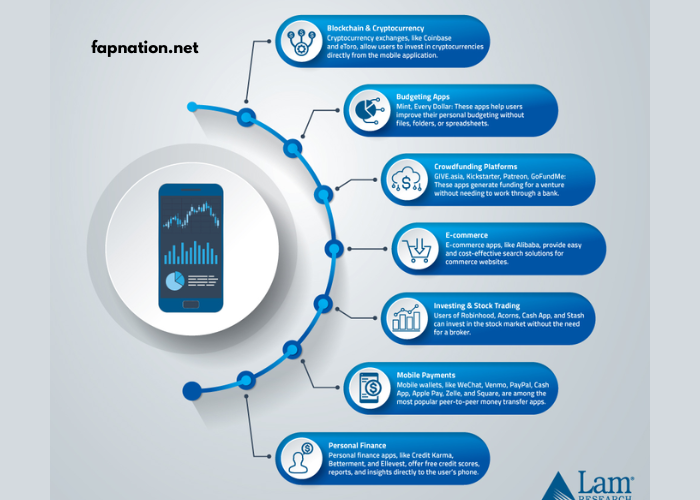In today’s fast-paced and data-driven business world, success is often determined by the ability to measure, analyze, and act upon key business metrics. Whether you are a startup, small business, or a large corporation, tracking the right metrics can make a significant difference in how your business performs. This article delves into the essential business metrics you need to track to ensure sustainable growth and long-term success.
Why Business Metrics Matter
Before diving into the specifics, it’s important to understand why tracking business metrics is crucial. Metrics provide insights into the health of your business, highlight areas for improvement, and guide decision-making. Without data-backed metrics, business leaders are left to rely on guesswork and intuition, which can lead to missed opportunities or costly mistakes.
Business metrics act as the compass that guides companies toward their goals. From financial performance to customer satisfaction, having a clear understanding of key metrics allows businesses to make informed, effective decisions that lead to increased profitability and growth.
Financial Metrics
Financial metrics are the bedrock of any business. These metrics give you a clear picture of your company’s financial health and help you assess profitability, liquidity, and solvency. Tracking financial metrics allows business owners and stakeholders to make informed decisions regarding investments, expenses, and pricing strategies.
1. Revenue Growth Rate
Revenue growth is the most basic yet crucial indicator of your business’s financial performance. Tracking your revenue growth rate over time allows you to evaluate the effectiveness of your marketing, sales, and product strategies.
Why It Matters:
Revenue growth is a direct reflection of the success of your business. It shows whether your company is able to generate consistent sales and attract new customers. A positive revenue growth rate signals that the business is expanding, while a stagnating or declining revenue growth rate signals that adjustments need to be made to your strategy.
2. Gross Profit Margin
The gross profit margin measures how efficiently your company produces its goods or services, factoring in direct costs such as materials and labor. It’s calculated by subtracting the cost of goods sold (COGS) from total revenue, and then dividing that figure by total revenue.
Why It Matters:
A healthy gross profit margin ensures that your business is generating enough revenue to cover operational costs. If your gross profit margin is too low, it may indicate that your cost structure is inefficient, or your pricing strategy is not aligned with your expenses.
3. Net Profit Margin
Net profit margin is the percentage of revenue left after all expenses have been deducted, including operating costs, taxes, interest, and other expenses. This metric provides a clear snapshot of your company’s overall profitability.
Why It Matters:
A high net profit margin signifies that your business is not only generating revenue but is also effectively managing its costs. Tracking this metric helps identify if your business is running too lean or if there’s room for further optimization.
Customer Metrics
Understanding your customer’s behavior is critical for any business, and tracking customer-related metrics helps you assess satisfaction, loyalty, and retention. Happy customers are likely to return and provide positive word-of-mouth marketing, which can be one of your most valuable assets.
4. Customer Acquisition Cost (CAC)
CAC refers to the cost of acquiring a new customer, including marketing expenses, sales expenses, and any other costs directly related to attracting new customers.
Why It Matters:
Tracking CAC helps you assess the efficiency of your sales and marketing efforts. If your CAC is too high, it might mean that your marketing strategies aren’t effective or that your business is spending too much to bring in new customers. Lowering CAC is an effective way to increase profitability without having to raise prices or cut quality.
5. Customer Lifetime Value (CLV)
Customer Lifetime Value is the total revenue a business can expect from a single customer throughout their relationship. CLV accounts for the frequency of purchases, the average transaction size, and the duration of the customer relationship.
Why It Matters:
Understanding CLV helps you determine how much you should spend on customer acquisition. If the CLV is significantly higher than the CAC, your business model is sustainable in the long run. This metric also informs decisions about customer retention strategies, such as loyalty programs or personalized services.
6. Churn Rate
Churn rate is the percentage of customers who stop doing business with your company over a given period. For subscription-based businesses, this can refer to the number of customers who cancel their subscriptions each month or year.
Why It Matters:
High churn rates indicate that your customers are dissatisfied, or that your product or service is no longer meeting their needs. Keeping an eye on churn allows you to intervene before losing more customers and refine your customer retention strategies.
Operational Metrics
Operational metrics help you assess how well your internal processes are functioning. These metrics can identify inefficiencies, improve workflows, and optimize resource allocation.
7. Inventory Turnover
Inventory turnover measures how often a business sells and replaces its inventory over a certain period, typically a year. A higher turnover ratio indicates that your products are selling quickly, while a low ratio might indicate overstocking or slow-moving inventory.
Why It Matters:
Efficient inventory turnover minimizes storage costs, reduces waste, and ensures you’re not tying up capital in unsold goods. Understanding your inventory turnover rate can also help optimize your supply chain and prevent stockouts or excess stock.
8. Employee Productivity
Employee productivity is a measure of how effectively your employees are contributing to your company’s goals. It’s usually calculated by dividing the total output or revenue by the number of employees.
Why It Matters:
By tracking employee productivity, you can identify underperformance and pinpoint areas where employees may need additional support or training. Improving employee productivity increases overall efficiency and can lead to cost savings and enhanced profits.
9. Average Order Value (AOV)
AOV refers to the average amount spent by a customer per order. It is calculated by dividing total revenue by the number of orders during a specific period.
Why It Matters:
Increasing AOV can significantly impact your bottom line without needing to acquire new customers. Tracking AOV helps businesses identify cross-selling and upselling opportunities, refine pricing strategies, and optimize product bundling.
Marketing Metrics
In the digital age, marketing has become one of the most vital components of business success. Marketing metrics help measure the performance of your campaigns and determine which strategies are delivering the best ROI.
10. Return on Investment (ROI)
ROI is a metric that evaluates the efficiency of an investment or campaign by comparing the return to the cost of the investment. For marketing campaigns, ROI is calculated by dividing the revenue generated by the marketing efforts by the cost of those efforts.
Why It Matters:
Tracking ROI helps businesses ensure that their marketing dollars are being spent wisely. A high ROI means that the campaign is yielding profitable results, while a low ROI suggests that changes are necessary to improve campaign effectiveness.
11. Website Traffic and Conversion Rate
Website traffic indicates how many people visit your site, while the conversion rate shows the percentage of visitors who take the desired action, such as purchasing a product or signing up for a newsletter.
Why It Matters:
These metrics help gauge the success of your digital marketing efforts, including SEO, paid advertising, and social media. High traffic combined with a low conversion rate could indicate that the site is attracting the wrong audience or that the user experience is not optimized for conversions.
12. Social Media Engagement
Social media engagement metrics track interactions with your content on platforms like Facebook, Instagram, LinkedIn, and Twitter. These interactions include likes, shares, comments, and mentions.
Why It Matters:
Social media engagement reflects brand awareness and audience loyalty. High engagement suggests that your content is resonating with your audience, while low engagement might mean that your content strategy needs refinement. These metrics can also help you understand which platforms yield the best results for your business.
Conclusion
Tracking key business metrics is not just a matter of collecting data—it’s about using that data to make informed, actionable decisions that drive your business forward. Whether it’s financial metrics like revenue growth and profit margins, customer-focused metrics like CAC and CLV, or operational and marketing metrics, every data point provides valuable insights into your company’s health and performance.
By regularly monitoring these metrics, businesses can adjust their strategies, optimize operations, and maximize profitability. Ultimately, the ability to track and respond to key business metrics is one of the most important factors that separates successful businesses from those that struggle to keep pace with their competition.
When you take the time to understand what these metrics are telling you, you can make better decisions, refine your strategies, and position your company for long-term success. Make these metrics a cornerstone of your business operations and watch your company thrive in an ever-evolving market landscape.



